TVS Loaner Scopes
Librarian: Ron Kane
TVS has a loaner scope program available to its members.
Renting a scope for a month or two allows you to "test drive" a variety of
scopes, whether you plan on buying one or not. This is especially good for
beginners who are learning the basics of using a telescope instrument.
We have a variety of telescopes available to rent to club members. The rental
rate for most scopes is $15 per month with a refundable deposit of either $50
or $100, depending upon the scope.
There are also special deals on the price. If you are a student then it is only
$5. If you bring the telescope to one of our public or school star parties then we
will refund a month's rental fee.
The telescopes are available on a first-come, first-serve basis meeting. Reservations are also accepted before the meeting by telephone or
e-mail. Contact the Loaner Scope Program Director,
.
Since this is a shared library we do ask that our renters respect other club members
and return the instruments on a timely basis and not keep it if others are
interested in using the telescope.
If you're a beginner then we suggest starting with one of our simplest instruments and then progress to a more sophisticated unit. The simplest is the Dobsonian mount - entirely manual with no computer support. Next try the "push-to" telescope mount that has a computer to assist your aiming to find fainter objects. Our Meade LightSwitch 8-inch SCT is being re-introduced to the Library and is a great instrument once you master its intricacies. Finally we have two computerized Equatorial Mounts with "goto" pointing and suitable for astrophotography.
Recent donantions from the collection of Bill Faatz (One of our 1970's TVS Founding Members) include the 150 mm Celestron acromat refractor and the Orion EQ-G mount as well as Lunt Engineering 100 mm binoculars and a variety of accessories. We're sorry to lose Bill but really appreciate that we've received these instruments for sharing!
In the rental telescope program we currently have:
-
One 10-inch f/4.5 Coulter Odyssey Dobsonian and an Orion 8-inch Dobsonian. These
are shown below as the red telescope and a simple Dob style telescope (much like the XT8i shown below).
The Dobs are easy to use and a have a big enough aperture to see a lot of
objects. Fairly heavy when lifted in one piece, but easily handled when taken apart
(base and tube separated). If you are a beginner then make use of the large number of
websites available to provide guidance, or ask your friendly TVS club
member!
You will have to learn how to "star hop" to see fainter objects, especially in our urban light-polluted area. You'll look for a bright star near the object you want to find and then navigate using movement in the general direction of the object or hop to other stars for guidance.
See
here for a beginner's guide to using dobsonians.
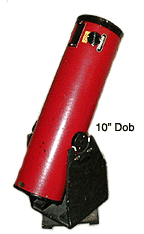
-
Orion SkyQuest XT8i Computerized IntelliScope Telescope
We have two "push-to" Orion Dobsonian reflector telescopes with an 8" aperture.
This is big enough to let you to see faint deep-sky objects such as nebulas and galaxies.
It includes the IntelliScope Computerized Object Locator to help you find
objects; and it has a database of more than 14,000 objects to choose
from. It uses a "push-to" design in which you follow directional arrows
displayed on the hand controller to know which way to push the telescope
to center your target. This design is very portable. The deposit for renting
these telescopes is $100.
See the
instructions
for using this telescope.
The computer module "handbox" instructions are:
handbox instructions
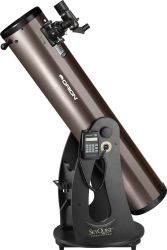
-
Meade LightSwitch 8-inch SCT
The LightSwitch was a fully automated instrument and talked to you in addition to aligning itself. However, the instrument is sensitive to star obscuration when aligning and even more problematic is that the 2nd line of the hand controller display no longer works and guessing is not an option. It has only been used in the Az-El configuration, balance may be an issue in the equatorial configuration.
The successful work-around requires using a laptop computer with the Meade app that simulates the hand controller and the use of Stellarium (ver 0.22 and not later) for easy sky navigation. If you want to use this one it'll require some instruction and when you're successful then we'll need you to train the following user. It is fun to use with Stellarium and does a great job optically as well.
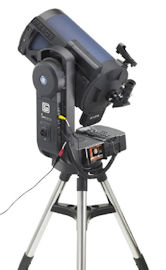
-
Equatorial Mount SCTs
Our German Equatorial Mount (GEM) uses the Celestron Advanced VX computerized mount and an 8-inch SCT re-purposed from one of our older telescopes. This is our latest purchased addition and until you've mastered the use of the Dobsonian telescopes you should wait before using this one. It's fairly heavy, has a significant number of parts and must also be "polar-aligned" so the mount can be calibrated appropriately for locating and tracking chosen objects. A $100 deposit is required for this instrument.
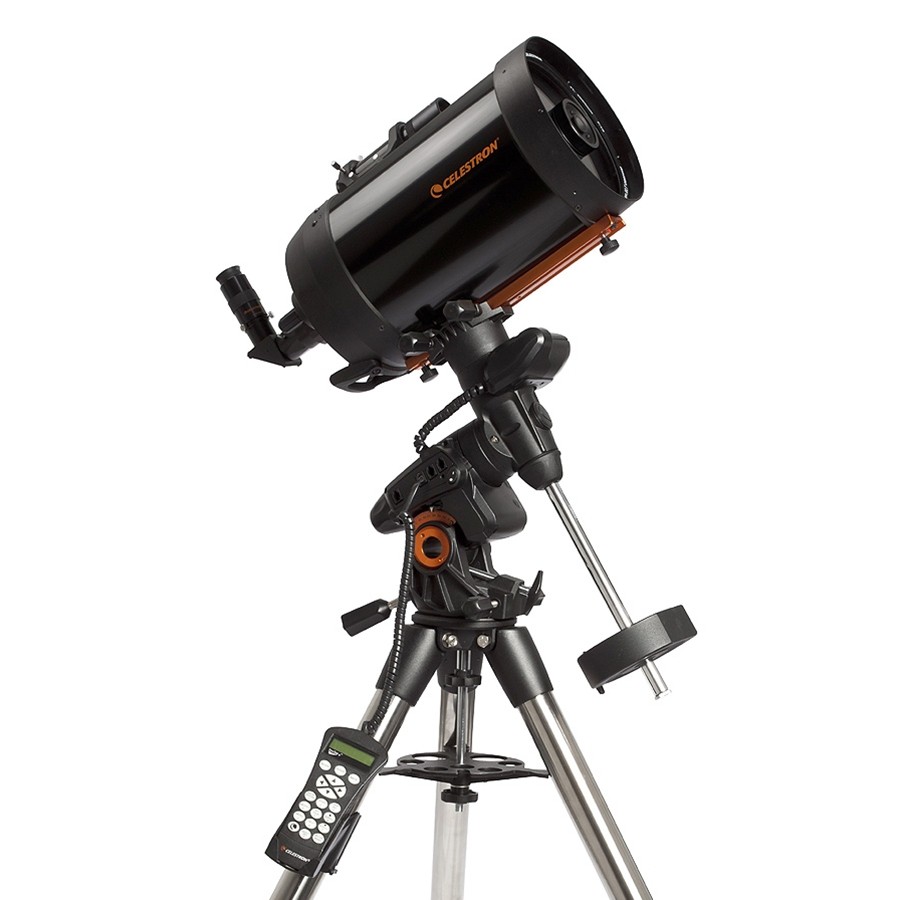
We have added the 150 mm refractor and Orion EQ-G mount as shown in the accompanying image but we can interchange OTAs and mounts as available. Same considerations are required for this mount as for the AVX with a $100 deposit as well.
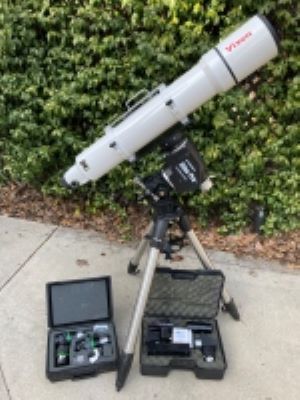
-
The Dobsonian telescopes are easier to set up and operate by beginners and are recommended
for first time telescope users.
Our first ten inch scope was donated by Dr. Jack Marling. Our second ten inch scope was donated by Conrad Stolarski. The three inch Unitron scope was donated by Jerry Howland.
We also have an assortment of non-telescope items for rent, including:
-
100 mm aperture Lunt Engineering Binoculars with multiple eyepiece sets and a binocular stand (these are too big to hold!). These are also from Bill Faatz and a great instrument!
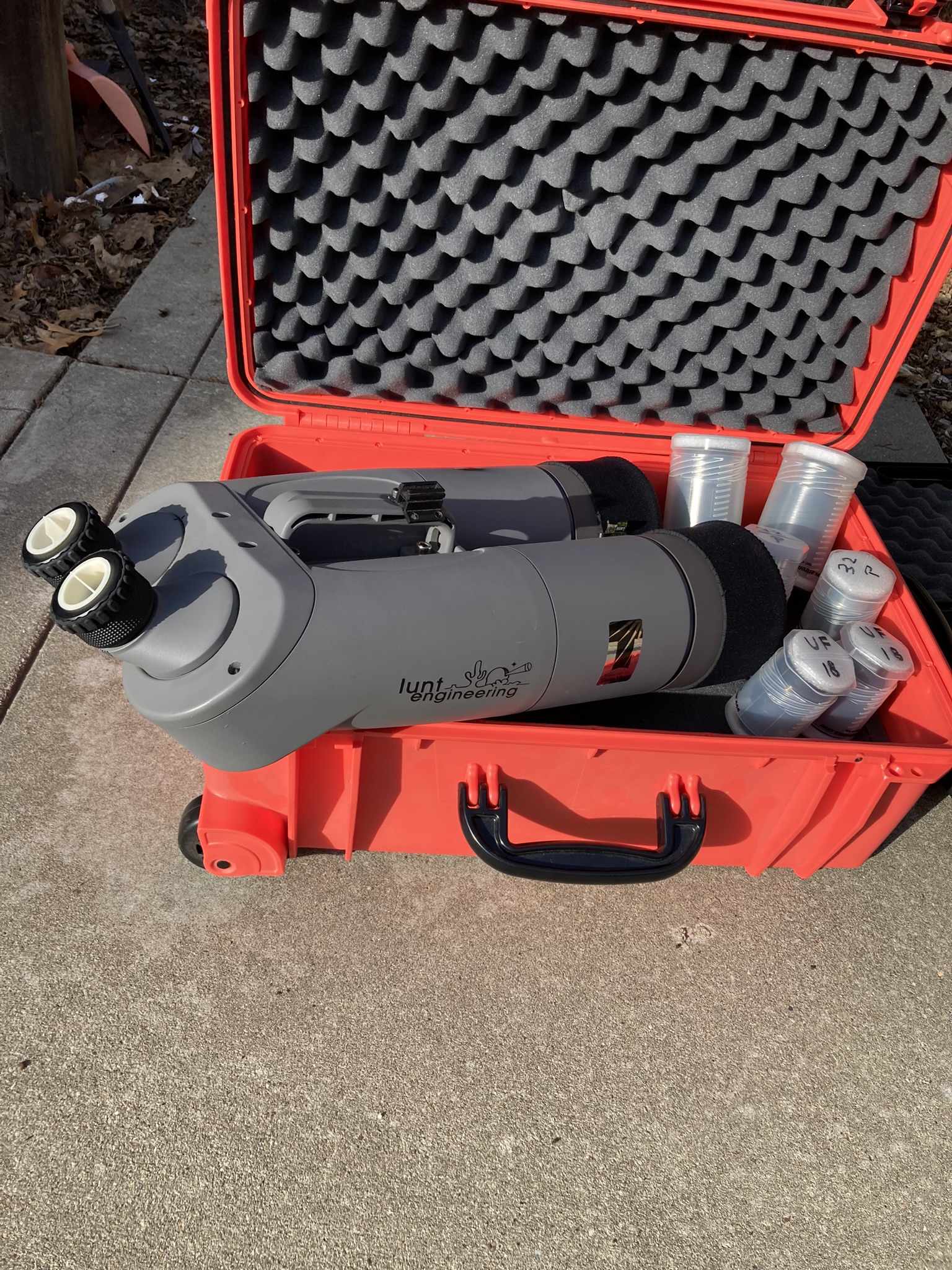
8x56 Celestron binoculars.
If you are new to astronomy, this is a nice way to learn your way around the sky.
It's much easier to get started with a low power binocular than a high power
telescope, and it's much more portable!
Return to Top